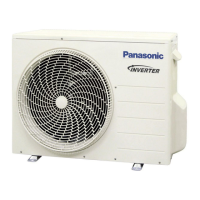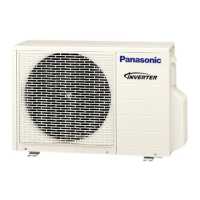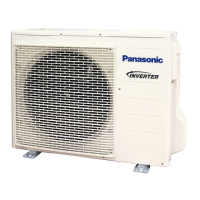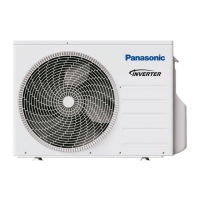Why is there a delay after restarting my Panasonic CU-2RE15SBE Air Conditioner?
- JJohn GonzalezSep 1, 2025
The delay in operation after restarting your Panasonic Air Conditioner is a protection mechanism for the unit's compressor.

Why is there a delay after restarting my Panasonic CU-2RE15SBE Air Conditioner?
The delay in operation after restarting your Panasonic Air Conditioner is a protection mechanism for the unit's compressor.
What causes the water flowing sound in my Panasonic Air Conditioner?
The water flowing sound you hear during the operation of your Panasonic Air Conditioner is due to the refrigerant flow inside the unit.
What causes a splashing sound during Panasonic Air Conditioner operation?
The splashing sound during the operation of your Panasonic Air Conditioner is due to the unit generating nanoe.
Why does airflow continue after stopping my Panasonic CU-2RE15SBE Air Conditioner?
The airflow continuing after your Panasonic Air Conditioner has stopped is due to the extraction of remaining heat from the indoor unit, which can take up to 30 seconds.
Why does dust accumulate on the wall near my Panasonic Air Conditioner?
Dust accumulation on the wall near your Panasonic Air Conditioner is due to air circulation or static electricity generated by the unit. Some types of wallpaper may collect dust easily, so it's recommended to clean the area frequently.
| Brand | Panasonic |
|---|---|
| Model | CU-2RE15SBE |
| Category | Air Conditioner |
| Language | English |
Explains warning symbols for serious injury and caution symbols for property damage.
Details compulsory actions and prohibited actions using symbols.
Safety guidelines for unit operation, remote control, and power supply.
Warnings about R32 refrigerant risks and safe handling precautions.
Safety related to refrigerant circuits, ventilation, and installation compliance.
Requirements for service personnel and safety procedures during work.
Procedures for leak detection, fire extinguishers, and ignition source control.
Checks for refrigeration equipment, electrical devices, and safety compliance.
Safety for sealed component repairs, intrinsically safe components, and cabling.
Methods for leak detection and safe evacuation of refrigerants.
Procedures for refrigerant charging and unit decommissioning.
Guidelines for equipment labelling and safe refrigerant recovery processes.












